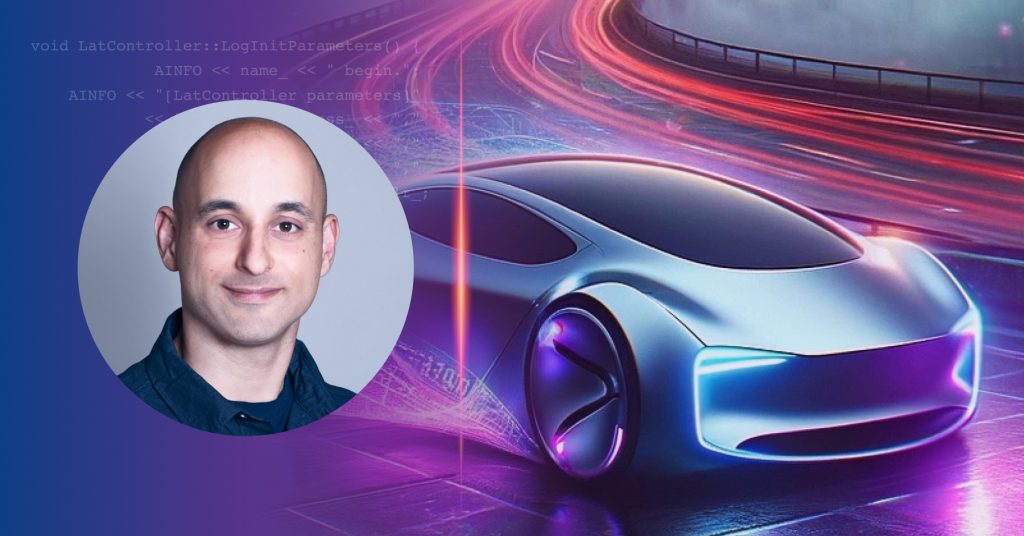As the automotive industry grapples with the challenges of modernization, it’s essential to understand that innovation in automotive software isn’t just about the development of new features. It’s equally about refining and redefining the processes that support it.
This is the second article in our three-part series where we explore how AI impacts the automotive industry. In the first, we dove into the need for new tools in the software development process.
The need for process innovation
Software innovation is undeniably crucial, especially as consumers begin to demand more high-tech features such as autonomous driving capabilities. However, the real challenge lies in ensuring that developers are also innovating the processes used to build automotive software. Changing human behavior, especially in a legacy industry such as this, is no small feat. The serial production of software — which is akin to a manufacturing production line — may offer control but is no longer the most efficient or effective way to approach software development.
What’s needed is a more agile approach (more on this in the third part of this series), one that involves smaller steps and innovative testing methods, such as virtual environments. Complex software demands process innovation, and the industry must rise to meet this challenge.
As we mentioned in our previous article in the series, the traditional way of matching customer requirements with the finished product was through the V-shape model. This is the way things have been done for a long time but it’s time-consuming and, often, inaccurate. Innovation isn’t just about adopting new technologies, it’s about thinking outside of tradition and considering what new processes might be possible with advanced tools such as those using AI.
The cultural shift
The journey to process innovation is as much about culture as methodology. Developers, who are often bogged down by the daily grind of fixing bugs and releasing software, may overlook the need to reevaluate their processes. As more tech-forward companies bring agility and innovation to the table, however, larger OEMs are beginning to take notice. These industry giants are now seeking insights from agile startups, indicating a promising shift toward a more collaborative and innovative future.
For developers who are already thinking in this way, it’s a case of looking at requirements, development, and testing, then considering how those processes could be improved using technology or new ways of working.
A good way to start thinking about this is in terms of the challenges. Within the traditional methods of development, what isn’t working? Perhaps the testing process takes too long or it’s difficult to get updates out on time. Maybe it’s external problems such as supplier deliveries that are causing issues. Whatever it might be, an innovative approach to the process could be the answer, especially when backed up by technology.
For example, if the testing process feels cumbersome, the question should be asked, is running all tests, no matter the software changes, the best way of achieving software quality? Switching to a process that incorporates AI to detect the changes in the software and analyze the potential quality risks could be the solution. For example, Auto Detect from Aurora Labs can efficiently select which tests have the highest probability of failure due to the changes made in the software in the specific build. Rather than running all tests available, this means only the necessary ones will run, significantly reducing time while still ensuring test effectiveness.
Shifting left
The cost, both in terms of money and resources, of detecting and fixing software problems increases as the software progresses through the software lifecycle. For example, traditional methods of software updates come with certain limitations, especially when it comes to the speed at which manufacturers can release updates. For instance, updating car software traditionally involves inefficient processes that are integrated and implemented after the software has been developed and installed in the vehicle ECU – a cumbersome and data-intensive process that’s far from cost-effective. However, AI technology, such as Aurora Labs’ Auto Update, now allows for software updates to be integrated as an integral part of the software development process and not as an afterthought.
To leverage the power of this technology, it’s important to build the tools into the Continuous Integration and Continuous Deployment (CI/CD) process. This not only makes the process more efficient but also paves the way for faster and more agile software development.
As the automotive industry continues its journey into the digital age, the balance between innovation and process will remain at its heart. By embracing agile methodologies, creating a culture of continuous improvement, shifting left with new technologies, and integrating AI tools, legacy automakers can ensure they keep ahead of the curve in a rapidly evolving industry.
If you’d like to learn how artificial intelligence could bring innovation to your software development processes, get in touch here.
Part 1| Part 3






 11 min read
11 min read
